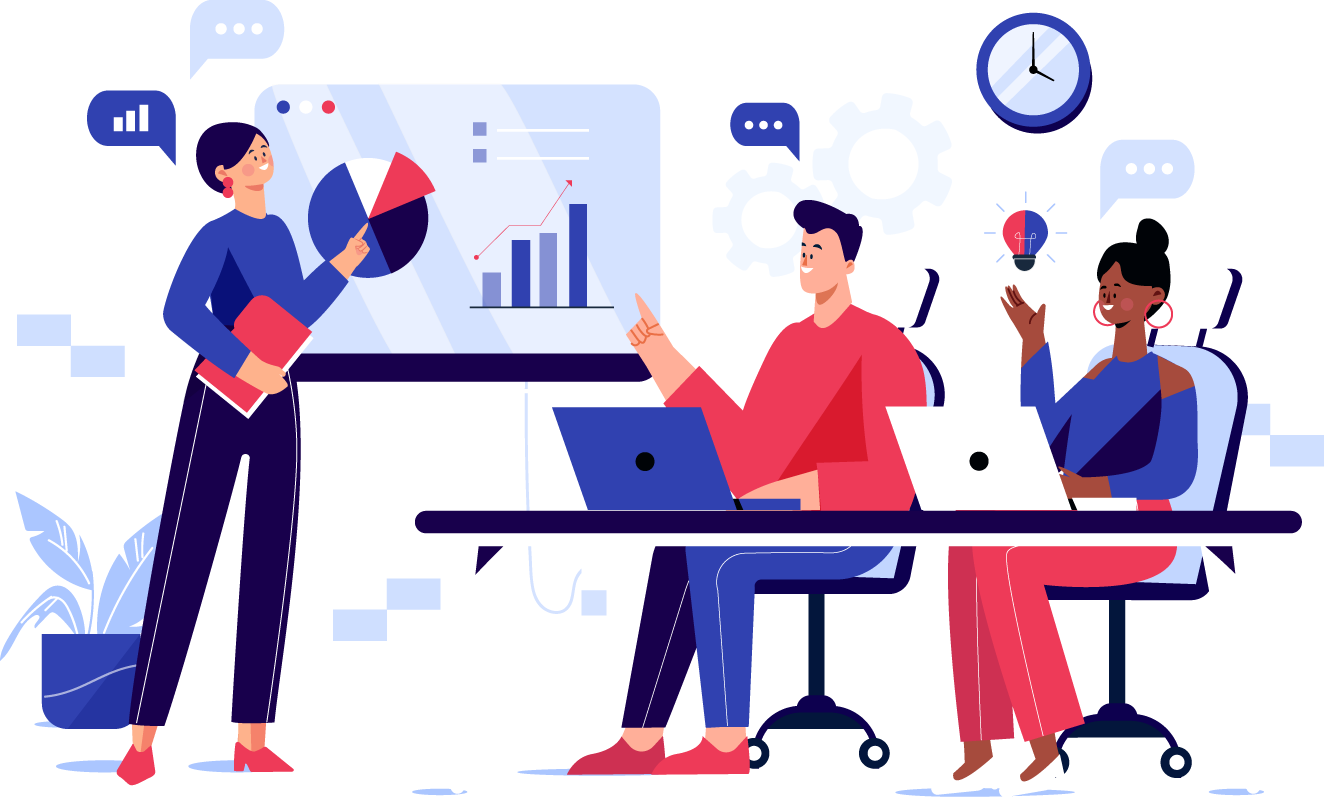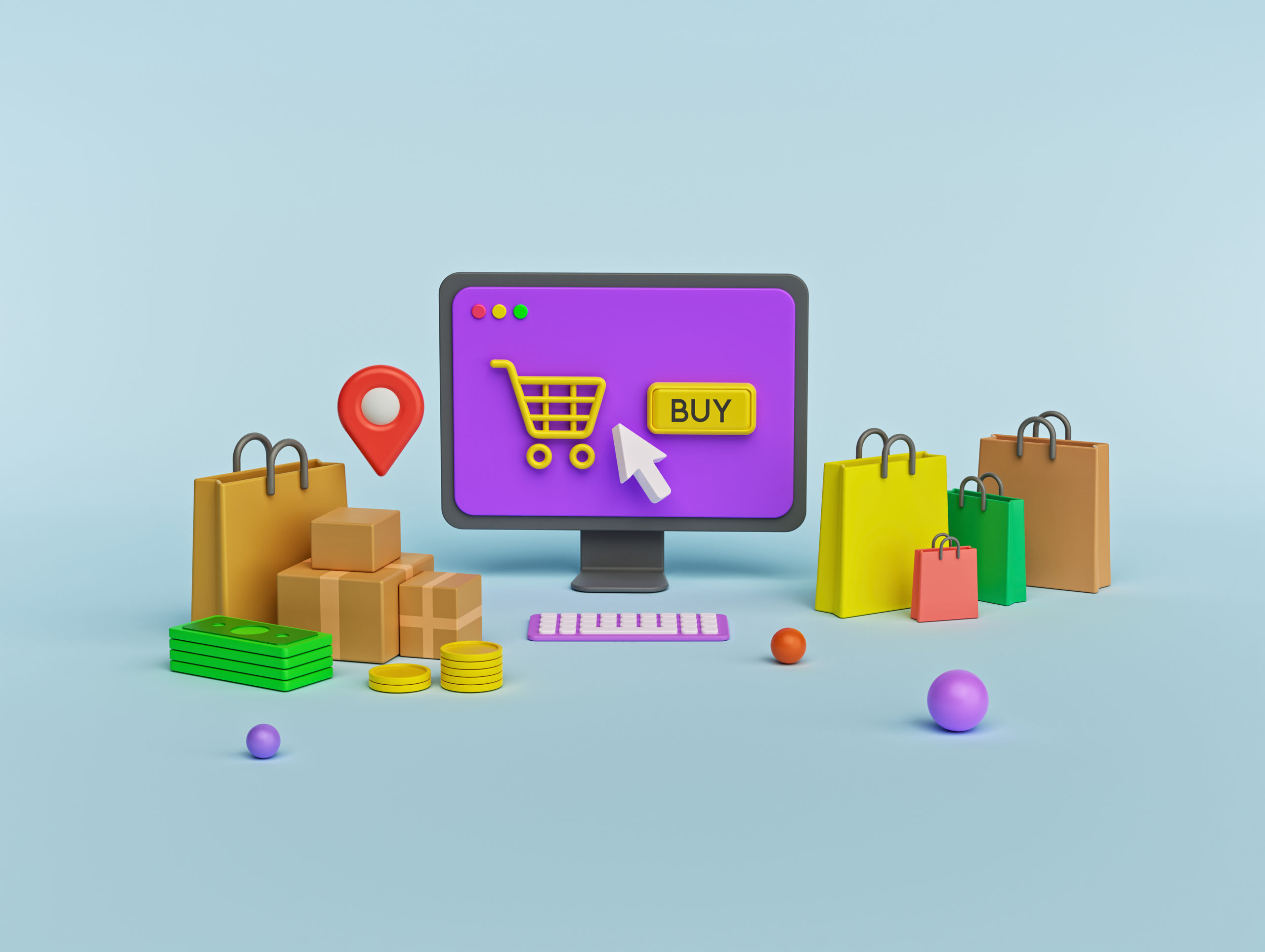Key Takeaways
- Upselling techniques can increase your revenue by 10-30% by encouraging customers to purchase higher-value products or add-ons
- Successful upselling and cross selling focuses on providing genuine value rather than pushing unnecessary products
- The best time to upsell is during checkout, immediately after an initial purchase, or through targeted follow-up campaigns
- Personalization and relevance are crucial - upsell and cross selling offers should complement the customer’s original purchase
- Combining multiple upselling and cross selling strategies like social proof, scarcity, and personalized recommendations maximizes conversion rates and increases revenue
What if I told you that you could increase revenue by 10-30% without acquiring a single new customer? That’s the power of effective sales strategy and upselling techniques. While many businesses focus solely on driving sales by finding new customers, smart companies know that encouraging current customers to spend more money by inspiring customer loyalty is often the fastest path to revenue growth.
The probability of successfully selling to an existing, paying customer is up to 14 times higher than acquiring a new one. This means your current customers represent a goldmine of untapped revenue potential, waiting to be unlocked with the right cross selling and upselling techniques.
In this comprehensive guide, we’ll explore how to upsell effectively using 10 proven strategies that successful businesses use to increase sales and boost revenue. Whether you run an online store, SaaS company, or service-based business, these tactics will help you maximize customer loyalty and lifetime value while enhancing customer satisfaction.
What is Upselling?
Upselling is a sales technique that encourages customers to purchase a more expensive, upgraded, or premium version of their chosen product or service. Unlike cross selling, which involves selling other relevant products, upselling focuses specifically on moving customers up to higher-value options within the same product category.
The classic example that most people recognize is McDonald’s famous question: “Would you like to super-size that?” This simple upselling technique increases the average order value by encouraging customers to upgrade their meal for just a small additional cost. Similarly, Apple’s iPhone storage upgrades represent one of the most successful upselling strategies in tech - customers can easily upgrade from 128GB to 256GB or 512GB storage with a single click during purchase.
Research shows that upselling is 68% more cost-effective than acquiring new customers, making it an essential component of any successful sales strategy. Companies that excel at upselling and cross selling see 40% more revenue from those activities compared to average performers, according to McKinsey research.
Successful upselling creates a win-win situation: customers feel they've receive enhanced value and improved functionality, while businesses increase sales and profit margins. The key is ensuring that your upsell offers provide genuine value that improves the customer’s experience rather than simply pushing more expensive products.
10 Proven Upselling Strategies to Boost Your Sales

These upselling strategies work across different industries and business models because they focus on value-driven approaches that enhance the customer experience. Each strategy can be implemented immediately and scaled based on your business needs and customer behavior patterns.
The most effective companies combine multiple strategies rather than relying on just one approach. By understanding customer data and purchase history, you can create sophisticated upsell and cross selling campaigns that feel personal and relevant rather than pushy or aggressive.
1. Offer Relevant Product Upgrades and Add-ons
The foundation of successful upselling lies in offering upgrades that genuinely complement the customer’s purchases. Analyzing customer purchase history and behavior patterns helps you identify the most appropriate upgrade opportunities for each segment of your customer base.
Best Buy exemplifies this strategy by offering Microsoft 365 subscriptions with laptop purchases. This upsell makes perfect sense - customers buying a new laptop likely need productivity software, and bundling it with the hardware purchase creates convenience while increasing the average order value.
For SaaS companies, this might mean offering premium features to users who consistently hit usage limits on their current plan. E-commerce businesses can suggest extended warranties for electronics, premium materials for clothing, or expedited shipping for time-sensitive purchases.
The key to making this upsell strategy work is relevance. Track which customers are power users of your basic features, monitor when users approach plan limits, and identify patterns in complementary product purchases. Your sales team should be trained to recognize these signals and present upgrades as solutions to customer needs rather than random profit opportunities.
When presenting upgrades, focus on the specific benefits rather than just features. Instead of saying “upgrade to our Pro plan,” explain “upgrade for 50% more storage and priority support for just $20 extra.” This approach helps customers understand the perceived value and makes the decision easier.
2. Create Irresistible Product Bundles

Product bundling combines multiple relevant products at an attractive price point, increasing sales while providing clear savings to customers. Effective bundles should combine products that naturally fit together in a single use case, making the bundle price appear as genuine value.
Dollar Shave Club mastered this approach by bundling razors, shaving cream, and aftershave products. Customers save money compared to buying items individually, while the company significantly increases revenue and customer retention. The bundle feels natural because all items serve the same grooming routine.
When creating bundles, research shows that offering 3-4 items tends to be the sweet spot. Too few items don’t provide enough perceived savings, while too many can create decision paralysis. Price your bundles to show clear savings - typically 15-25% off the individual item prices.
For your online store, analyze customer purchases to identify which complementary products are frequently bought together. This customer data reveals natural bundling opportunities that will feel relevant rather than forced. Present bundles prominently on product pages and during checkout to capture customers while they’re already in buying mode.
Consider seasonal or themed bundles that align with customer needs at specific times. Back-to-school bundles, holiday gift sets, loyalty rewards, or new customer starter packages can drive higher conversion rates by matching the customer’s mindset and immediate needs.
3. Implement Free Shipping Thresholds
Free shipping thresholds are one of the most effective ways to encourage customers to increase their order size. Studies show that free shipping can increase order values by 30-50%, making this a powerful tool for boosting sales without complex implementation.
The strategy works by setting a minimum order amount slightly above your current average order value - typically 10-20% higher. When customers see they’re close to qualifying for free shipping, they’re motivated to add more items to their cart rather than pay shipping fees.
Amazon Prime revolutionized this concept by making free shipping a membership benefit, but smaller businesses can implement dynamic shipping bars that show customers exactly how much more they need to spend. Messages like “Add $25 more for free shipping” create clear motivation to increase purchase amounts.
To optimize your threshold, analyze your average order and shipping costs. Set the minimum high enough to offset shipping expenses while remaining achievable for most customers. Monitor how threshold changes affect both conversion rates and average order value to find your optimal balance.
Consider offering different shipping options to encourage customers to upgrade their entire order. Express shipping, premium packaging, or delivery guarantees can justify higher order values while improving the customer experience and customer satisfaction.
4. Leverage Scarcity and Limited-Time Offers

Scarcity tactics leverage the psychological principle of FOMO (fear of missing out) to motivate immediate action on upsell offers. When customers believe an opportunity is limited or time-sensitive, they’re more likely to upgrade their purchase to avoid missing out.
eBay effectively uses scarcity by displaying “Only 3 left in stock” messages, while Booking.com shows “8 people are looking at this hotel” to create urgency. These tactics work because they trigger the brain’s loss aversion mechanism - people hate missing out on deals more than they enjoy getting them.
Implement countdown timers for exclusive upsell offers, show real-time stock levels, or create “upgrade-only” deals not available elsewhere. The key is using these tactics ethically and honestly - fake scarcity will damage customer trust and long-term relationships.
For subscription services, offer limited-time upgrade pricing like “Upgrade to Premium this week and save 25% for the first three months.” This creates urgency while providing genuine value to customers willing to commit to higher service levels.
Track the performance of different scarcity messages to understand what resonates with your audience. Some customers respond better to time pressure (“Sale ends in 2 hours”) while others are motivated by limited availability (“Only available for first 100 customers”).
5. Provide Personalized Recommendations
Personalization transforms generic upsell offers into relevant suggestions that feel helpful rather than pushy. By analyzing customer data including browsing history, past purchases, and user behavior, you can present highly targeted upsell opportunities that match individual customer needs.
Amazon’s “Customers who bought this also bought” feature represents the gold standard for personalized upselling. This recommendation engine analyzes millions of purchase patterns to suggest relevant upgrades and add-ons that customers are statistically likely to find valuable.
For SaaS companies, monitor user activity to identify customers who frequently use features that would benefit from premium upgrades. Send personalized emails highlighting specific benefits based on their usage patterns rather than generic upgrade messages.
Implement AI-powered recommendation engines that learn from customer behavior over time. These systems become more accurate as they collect more data, improving conversion rates and customer satisfaction simultaneously. Many e-commerce platforms now offer built-in recommendation tools that can be customized for your specific upselling strategy.
Use customer segmentation to create different upsell paths for different user types. Power users might be interested in advanced features, while casual users might prefer convenience upgrades or simplified pricing options. This segmentation ensures your upsell messages feel relevant to each customer’s specific situation.
6. Use Social Proof and Customer Reviews

Social proof amplifies trust in upsell offers by demonstrating that other customers have successfully benefited from premium products or services. Customer testimonials, reviews, and usage statistics can significantly increase upsell conversion rates by reducing purchase anxiety.
Display customer reviews and star ratings prominently on upsell pages. Messages like “4.8/5 stars from 2,847 customers chose the premium option” provide concrete evidence that the upgrade delivers value. This approach is particularly effective for high-consideration purchases where customers want reassurance before spending more money.
User-generated content such as photos, videos, and detailed testimonials from satisfied customers creates powerful social proof. Encourage customers who purchase upgrades to share their experiences, then feature this content in your upsell campaigns to future customers.
Leverage social proof notifications like “127 people upgraded to Premium this week” to show momentum and popularity. These real-time social proof suggest that many others are finding value in the upgrade, making it feel like a smart choice rather than an unnecessary expense.
For B2B sales, case studies showing how other companies benefited from premium features can be extremely persuasive. Include specific metrics like “increased efficiency by 40%” or “reduced processing time by 2 hours daily” to make the business case clear for potential upgrades.
7. Offer Strategic Discounts and Incentives
Strategic discounting for upsells can motivate customers to choose higher-value options when positioned correctly. The key is creating discount structures that make premium choices feel like smart financial decisions rather than unnecessary expenses.
Implement tiered discounts that increase with order value, such as “20% off when you add this premium accessory” or “Buy 2, get the third 50% off.” These structures encourage customers to reach higher spending thresholds while feeling like they’re getting better deals.
Loyalty program benefits for existing customers can drive upsell acceptance by making premium options exclusive rewards. loyal customers might receive early access to new products, special upgrade pricing, or bonus features that aren’t available to new customers.
First-time buyer incentives can introduce customers to premium options at reduced risk. Offering “50% off your first premium month” allows customers to experience enhanced features without full commitment, often leading to continued subscription at regular pricing.
Volume discounts work particularly well for B2B customers or repeat purchasers. Bulk pricing structures encourage larger orders while improving profit margins through increased efficiency and customer lifetime value.
8. Display Clear Product Comparisons

Clear product comparisons help customers understand the value difference between basic and premium options, making upgrade decisions easier and more confident. Side-by-side comparison tables highlighting premium features remove uncertainty about what customers gain by spending more money.
SaaS companies like Slack excel at this strategy with their Basic vs. Pro vs. Enterprise comparison tables. Each tier clearly shows additional features, usage limits, and support levels, making it easy for customers to identify which option best fits their needs and budget.
Visual highlighting of “Most Popular” or “Best Value” options guides customers toward higher-value choices without being pushy. This nudging technique leverages social proof while helping customers make decisions more quickly.
Include clear benefit statements for each tier that focus on outcomes rather than features. Instead of listing “Advanced analytics,” explain “Identify your best customers and increase repeat sales.” This approach helps customers visualize how upgrades will improve their specific situation.
Make your comparison tables mobile-friendly since many customers browse and purchase on mobile devices. Simplified mobile comparisons should highlight the most important differences without overwhelming small screens with too much information.
9. Implement One-Click Post-Purchase Upsells
Post-purchase upsells capitalize on customers’ buying momentum by offering relevant upgrades immediately after their initial purchase using their existing payment information. This timing is optimal because customers have already committed to spending and their payment details are readily available.
Implement immediate post-checkout offers like “Complete your purchase with this 50% off accessory - one click to add!” These offers work because customers are still in buying mode and the friction for additional purchases is minimal.
Technical implementation using tools like SamCart, ClickFunnels, or native e-commerce platform features allows seamless one-click additions. The key is making the process effortless while ensuring the offers are genuinely relevant to the original purchase.
Timing considerations are crucial for maximum acceptance rates. Present upsells immediately after the initial purchase is successful, when customer satisfaction is highest and buyer’s remorse hasn’t yet set in. Test different timing intervals to optimize for your specific customer base.
Limit post-purchase upsells to one or two highly relevant offers to avoid overwhelming customers or creating decision fatigue. Too many options can decrease conversion rates and potentially damage the positive post-purchase experience.
10. Use Behavior-Based Pop-ups and Triggers

Behavior-based triggers allow you to present upsell offers at optimal moments based on customer actions and engagement patterns. These targeted interventions feel more natural than random pop-ups and achieve higher conversion rates by matching customer intent.
Exit-intent pop-ups offering last-minute upgrades can capture existing customers before they leave your site. Messages like “Wait! Upgrade to premium shipping for just $5 more” can recover potential lost sales while increasing order value.
Time-based triggers after customers spend specific amounts of time on product pages indicate genuine interest. If someone spends 3+ minutes comparing product options, they’re likely considering a purchase and may be receptive to complementary products or relevant upgrade suggestions.
Cart abandonment sequences with upgrade incentives can re-engage customers who left without completing purchases. Follow-up emails highlighting premium features or limited-time upgrade discounts can bring customers back while encouraging higher-value purchases.
Monitor user behavior patterns to identify optimal trigger points for your specific audience. Some customers respond better to immediate suggestions, while others prefer time to consider options before receiving upgrade offers.
When to Upsell for Maximum Impact

Timing is crucial for successful upselling and cross selling because customers are most receptive to upgrade offers when they’re already engaged in the buying process. Research shows customers are 3x more likely to accept upsells when they’re already in purchasing mode, making strategic timing essential for boosting sales.
The key is balancing helpfulness with sales objectives. Present upsells as valuable enhancements to the customer experience rather than aggressive sales tactics. When customers feel pushed or pressured, they’re more likely to abandon their purchase entirely.
Understanding the customer journey helps identify optimal moments for upsell opportunities. Map out each touchpoint from initial interest through post-purchase follow-up to find natural moments for upgrade suggestions that enhance rather than interrupt the experience.
During the Checkout Process
Checkout page upsells represent prime opportunities because customers have already decided to purchase and are actively entering payment information. However, these offers must be carefully implemented to avoid causing cart abandonment due to distraction or confusion.
Best practices for checkout upsells include keeping offers simple, relevant, and optional. Add-ons should be complementary products to the main purchase without requiring additional shipping, or complicating the order fulfillment process. One-click additions work best because they don’t disrupt the checkout flow.
Mobile optimization is crucial since increasing numbers of customers complete purchases on smartphones. Checkout upsells must be clearly visible and easy to select on small screens without making the checkout process more difficult or time-consuming.
Examples of successful checkout integrations include warranty offers for electronics, expedited shipping upgrades, or complementary accessories. These additions feel natural and provide clear value without requiring customers to reconsider their main purchase decision.
Test different upsell placements within your checkout process to find optimal positioning. Some customers respond better to early-stage offers, while others prefer final confirmation before payment. A/B testing helps identify what works best for your specific customer base.
Immediately After Purchase
Thank you pages represent valuable real estate for upsell offers because they are satisfied customers who have successfully completed their purchase and are experiencing positive emotions about their decision. This psychological state makes them more receptive to additional relevant offers.
One-click upsell implementation allows existing customers to add items using their saved payment information without re-entering details. This reduces friction and increases conversion rates compared to requiring separate checkout processes for additional items.
Conversion rates for post-purchase upsells typically range from 15-25% when offers are relevant and well-positioned. These additions can significantly impact average order value and customer lifetime value with minimal additional acquisition costs.
Examples of successful post-purchase sequences include software companies offering premium support packages, retailers suggesting complementary accessories, or subscription services presenting upgrade trials. The key is maintaining relevance to the original purchase while providing clear additional value.
Monitor post-purchase upsell performance carefully to ensure you’re not creating negative experiences that could impact customer satisfaction or customer retention. The goal is enhancing customer satisfaction, not extracting maximum short-term revenue at the expense of long-term loyal customers.
Follow-up Email Campaigns
Automated email sequences provide opportunities for ongoing upsell conversations that feel natural and helpful rather than pushy. These campaigns can educate customers about premium features while tracking engagement to identify the most receptive prospects for boosting sales.
Timing considerations for follow-up campaigns typically include 24-hour, one-week, and one-month intervals after initial purchase. Each touchpoint serves different purposes: immediate satisfaction confirmation, usage education, and long-term relationship building with upgrade opportunities.
Segmentation strategies based on customer behavior and purchase history ensure relevant messaging for different customer types. Power users might receive advanced feature promotions, while casual users get convenience and support upgrade offers that match their usage patterns.
Personalize email content based on customer data including purchase history, product usage, and engagement patterns. Generic upgrade emails have much lower conversion rates than targeted messages addressing specific customer needs and behaviors.
Track email performance metrics including open rates, click-through rates, and conversion rates to optimize messaging and timing. A/B testing different subject lines, content formats, and call-to-action buttons helps improve campaign effectiveness over time.
Measuring Upselling Success

Tracking the right metrics is essential for optimizing your upselling strategies and demonstrating their impact on business revenue. Key performance indicators help you understand which upsell strategies work best for different customer segments and identify opportunities for improvement.
Average order value serves as the primary metric for measuring upselling success. Track this metric over time and compare periods with and without upselling campaigns to quantify their impact on sales performance. Segment this data by customer type, product category, and marketing channel for deeper insights.
Upsell conversion rate measures what percentage of customers accept upgrade offers. This metric helps you understand which upselling strategies resonate most with your audience and identify optimization opportunities. Track conversion rates by offer type, timing, and customer segment.
Customer lifetime value provides insight into the long-term impact of upselling on business growth. Customers who accept upsells often become more loyal and valuable over time, making this metric crucial for understanding the full value of your upselling efforts.
Tools for measuring upsell performance include Google Analytics for tracking e-commerce metrics, specialized platforms like Klaviyo for email campaign performance, and customer relationship management systems for tracking individual customer value progression.
A/B testing strategies help optimize upsell offers by comparing different approaches with similar customer groups. Test variables including offer timing, messaging, pricing, and presentation format to identify the most effective combinations for your business and customer base.
ROI calculation methods for upselling campaigns should account for both immediate revenue increases and long-term customer value improvements. Factor in increased customer retention, higher lifetime value, and reduced acquisition costs when evaluating campaign success.
Regular reporting and analysis ensure your upselling strategies continue improving over time. Monthly reviews of key metrics help identify trends, successful tactics, and areas needing adjustment to maximize revenue growth and customer satisfaction.
FAQ
How much can upselling increase my revenue on average?
Effective upselling strategies can typically increase revenue by 10-30% for most businesses. The exact impact depends on your industry, product mix, and implementation quality. Companies that excel at upselling report even higher gains, with some seeing 40% or more revenue increases from upselling activities. SaaS companies and subscription services often see the highest impact because upsells typically result in recurring revenue increases rather than one-time boosts.
What’s the difference between upselling and cross-selling in practice?
Upselling encourages customers to buy a more expensive or upgraded version of their chosen product, while cross-selling involves selling additional, complementary products. For example, if a customer buys a laptop, upselling would be convincing them to upgrade to a model with more memory or a faster processor. Cross-selling would be selling them a laptop bag, software, or extended warranty alongside their original laptop choice. Both cross and upsell strategies can be used together for maximum revenue impact.
How do I avoid annoying customers with my upsell offers?
Focus on providing genuine value rather than pushing unnecessary upgrades. Ensure your upsell offers are relevant to the customer’s initial purchase and clearly communicate the benefits they’ll receive. Limit the number of upsell offers presented at once to avoid overwhelming customers, and always make upgrades optional rather than required. Monitor customer feedback and adjust your approach if you notice increased complaints or decreased satisfaction scores.
What tools can help me implement automated upselling?
Popular upselling tools include Shopify’s built-in upsell features for e-commerce, HubSpot for email-based upsell campaigns, and specialized platforms like Bold Upsell or ReConvert for advanced upselling automation. For SaaS businesses, tools like Intercom or Userpilot can trigger behavior-based upsell messages within your application. Choose tools that integrate well with your existing systems and provide the analytics needed to track performance and optimize results.
When is the worst time to attempt an upsell?
Avoid upselling when customers are expressing dissatisfaction, experiencing technical problems, or trying to cancel their service. Don’t present upsell offers during customer support interactions focused on resolving issues, as this can damage trust and worsen the customer experience. Also avoid upselling immediately after price increases or during economic downturns when customers are particularly price-sensitive. Wait for positive interactions and demonstrated satisfaction before presenting upgrade opportunities.


